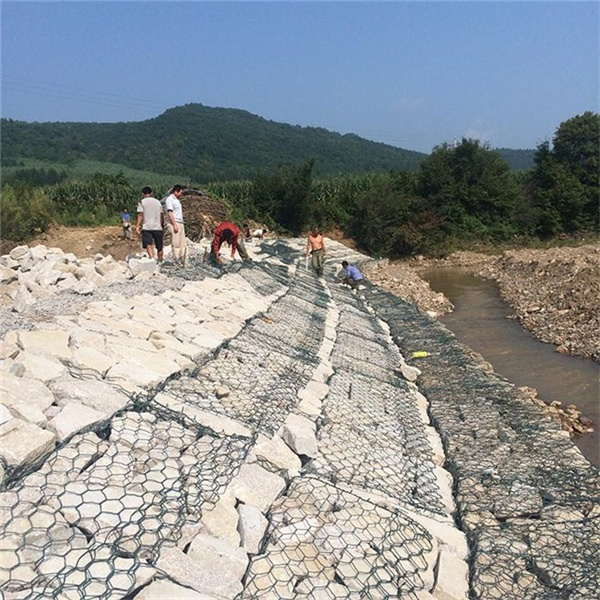12-р сар . 12, 2024 23:22 Back to list
best gabion wall sound reduction
The Best Gabion Wall for Sound Reduction A Comprehensive Guide
In today's increasingly noisy world, finding effective solutions for sound reduction has become essential. One innovative approach to tackling noise pollution is using gabion walls. These structures, made of wire mesh filled with stones, offer not only aesthetic value but also impressive acoustic benefits. In this article, we’ll explore how gabion walls can effectively reduce sound, the factors contributing to their efficacy, and the best practices for implementation.
Understanding Gabion Walls
Gabion walls are traditionally used for soil erosion control, landscaping, and decorative purposes. Constructed from sturdy wire mesh filled with natural stone or other materials, they are highly durable and allow for a variety of design applications. While their primary function may not be sound reduction, their unique structure and mass can providing notable acoustic barriers.
Sound Reduction Mechanism
The fundamental principle behind sound reduction is the absorption, reflection, and transmission of sound waves. Gabion walls can effectively modify these sound waves due to their mass and density. When sound waves encounter a gabion wall, several reactions occur
1. Mass and Density The heavy filling materials in gabions help absorb sound energy. The denser the wall, the more effective it will be at preventing sound from passing through.
2. Irregular Surfaces Gabion walls have variable shapes and sizes, which disrupt sound wave patterns, helping to scatter them rather than allowing for a direct transmission.
3. Porosity The gaps between the stones allow for some sound dissipation. While this might seem counterintuitive, this porosity means that certain frequencies can be absorbed and dissipated more effectively, reducing the overall noise level.
Factors Contributing to Effective Sound Reduction
To achieve optimal sound reduction with gabion walls, several factors must be considered
1. Height and Thickness Taller and thicker walls are generally more effective at blocking sound. Depending on the source of the noise, a height of at least 6 feet is often recommended for significant reduction.
best gabion wall sound reduction

2. Material Choice The type of stones used in filling the gabions can impact sound reduction capabilities. Denser materials such as granite or basalt can offer better results than lighter stones.
3. Wall Positioning The placement of the gabion wall relative to the noise source is crucial. Ideally, the wall should be placed as close as possible to the sound source to maximize its blocking effect.
4. Design Configuration Including variations in wall design, such as curves or angled sections, can enhance sound dispersion, making the structure more effective in blocking noise.
Best Practices for Implementation
To ensure that your gabion wall effectively reduces sound, adhere to the following best practices
1. Site Assessment Before construction, assess the site’s noise levels and sources. Understanding the predominant frequency of the noise can help determine the necessary wall specifications.
2. Professional Guidance Engaging with architects or engineers experienced in acoustic design can provide insights into the best wall configurations and material choices for your specific needs.
3. Regular Maintenance While gabion walls are low maintenance, periodic checks for integrity and stability will ensure they continue to perform effectively over time.
4. Consider Complementary Solutions While gabion walls can greatly reduce noise, combining them with other sound mitigation techniques such as landscaping (e.g., thick vegetation) can enhance overall effectiveness.
Conclusion
In conclusion, gabion walls present an innovative solution for sound reduction in both residential and commercial settings. Their unique construction, combined with the right design and positioning, can dramatically lower noise levels, creating a more tranquil environment. By understanding the mechanics of sound reduction, considering key factors for effectiveness, and implementing best practices, you can harness the potential of gabion walls to make a significant impact on noise pollution in your area. Whether for privacy, tranquility, or simply better outdoor living experiences, adopting gabion walls is a step towards a quieter and more peaceful future.
-
HESCO Gabion Baskets for Coastal Erosion Prevention
NewsAug.22,2025
-
Longevity and Durability of River Rock Gabion Walls
NewsAug.22,2025
-
How to Integrate Gabion 3D Walls in Urban Planning
NewsAug.22,2025
-
Reno Mattress Gabion Applications in Civil Engineering
NewsAug.22,2025
-
How to Install Wire Mesh for Gabion Baskets Properly
NewsAug.22,2025
-
Best Materials for Filling a Chain Link Gabion
NewsAug.22,2025
-
Wire Mesh Thickness Impact on Gabion Wall Load Bearing
NewsAug.12,2025






